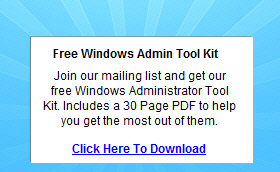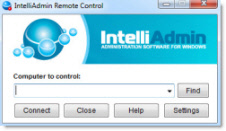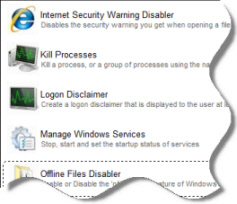Outlook 2010 reports unknown server location
Hello.
I'm not sure if this is the exact forum for this question, but I think it seems about right. I have just migrated from SBS 2003 to 2008, and everything apparently seems OK.
However, I have just used SCE to deploy (and upgrade from 2003) to Office 2010 Pro. The deployment was ok, and no errors. However, when trying to book a meeting in Outlook, I cannot use the planning card to see the participants availability. They are all
marked as no info available, and the mouseover says that Outlook is unable to determine the server location (might not be the _exact_ English phrase, as my Outlook is localized). Mails are received OK in and out, so it definitely knows where the server is.
Using OWA, I can see the calendar info ok, so that works.
Another weird thing is that on my test user, one contact is available, but the name of it is an AD object string ("GROUP/CN=RECIPIENTS/CN=...."). Guess something must have happened during migration after all. Don't know if it's related, and I'm not asking
for migration help in this forum. Just wanted to mention it :-)
Any suggestions as to how to fix the planning tab?
Regards,
Chocolate Eater
December 6th, 2010 7:51pm
Outlook 2007 and later with Exchange 2007 and later uses the availability service, a web service, for free-busy data. In Outlook, hold down the Ctrl key, click the Outlook icon in the system tray, and select Test E-Mail Autoconfiguration. Clear
all checkboxes except Use Autodiscover, complete your e-mail address and password, then click Test. Note what you see for the Availability Service URL, and make sure that's a valid URL, and that your certificate is valid if it's using HTTPS.Ed Crowley MVP "There are seldom good technological solutions to behavioral problems."
Free Windows Admin Tool Kit Click here and download it now
December 6th, 2010 8:18pm
Hi Chocolate,
Any update for your issue?
ED gave some good suggestion.
Some other information for you:
http://technet.microsoft.com/en-us/library/bb232134.aspx
If you still has some issue, please tell us.
Regards!
Gavin
TechNet Subscriber Support
in forum
If you have any feedback on our support, please contact
tngfb@microsoft.com
Please remember to click Mark as Answer on the post that helps you, and to click Unmark as Answer if a marked post does not actually answer your question. This can be beneficial to other community members reading the thread.
December 7th, 2010 4:49am
Thank you for that piece of information! Seems that pretty much everything fails. Can't copy and paste the error messages, but it can find the remote.mydomain.com from SCP. Then, it tries to look up Autodiscover.xml, but fails with 0x80070057. Then it tries
without remote (looking up using DNS, I guess), and that fails as well with 0x800C8203.
I've Googled a bit, and all I can find is a suggestion to add remote.mydomain.com to Trusted Sites in IE (love IEs integration with everything), but that didn't help. Any idea how I can pursue this further?
I can paste a screen shot of the error messages, if necessary.
Regards,
Chocolate Eater
Free Windows Admin Tool Kit Click here and download it now
December 7th, 2010 5:16am
Ok, I have done some digging. After trying Test-OutlookWebServices, I got a 401 on accessing the Autodiscover-service. I found that I had to disable loopback check (HKEY_LOCAL_MACHINE\SYSTEM\CurrentControlSet\Control\Lsa\DisableLoopbackCheck = 1, if anyone
wonders). I did, and now both the test and Outlook 2010 is working properly.
However, I was told to enable the loopback check again after testing, because it is a security breach. How come? If I enable it, I will be back to square one :-)
Regards,
Chocolate Eater
December 7th, 2010 8:34am
Hi Chocolate,
If everything work well, you do not need enable it again.
Regards!
Gavin
TechNet Subscriber Support
in forum
If you have any feedback on our support, please contact
tngfb@microsoft.com
Please remember to click “Mark as Answer” on the post that helps you, and to click “Unmark as Answer” if a marked post does not actually answer your question. This can be beneficial to other community members reading the thread.
Free Windows Admin Tool Kit Click here and download it now
December 8th, 2010 4:28am


